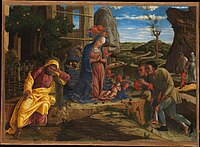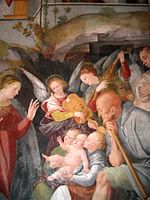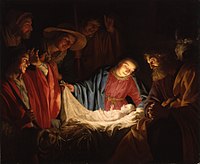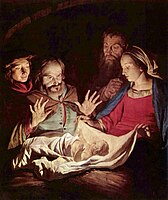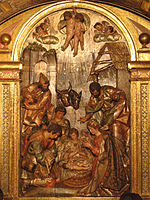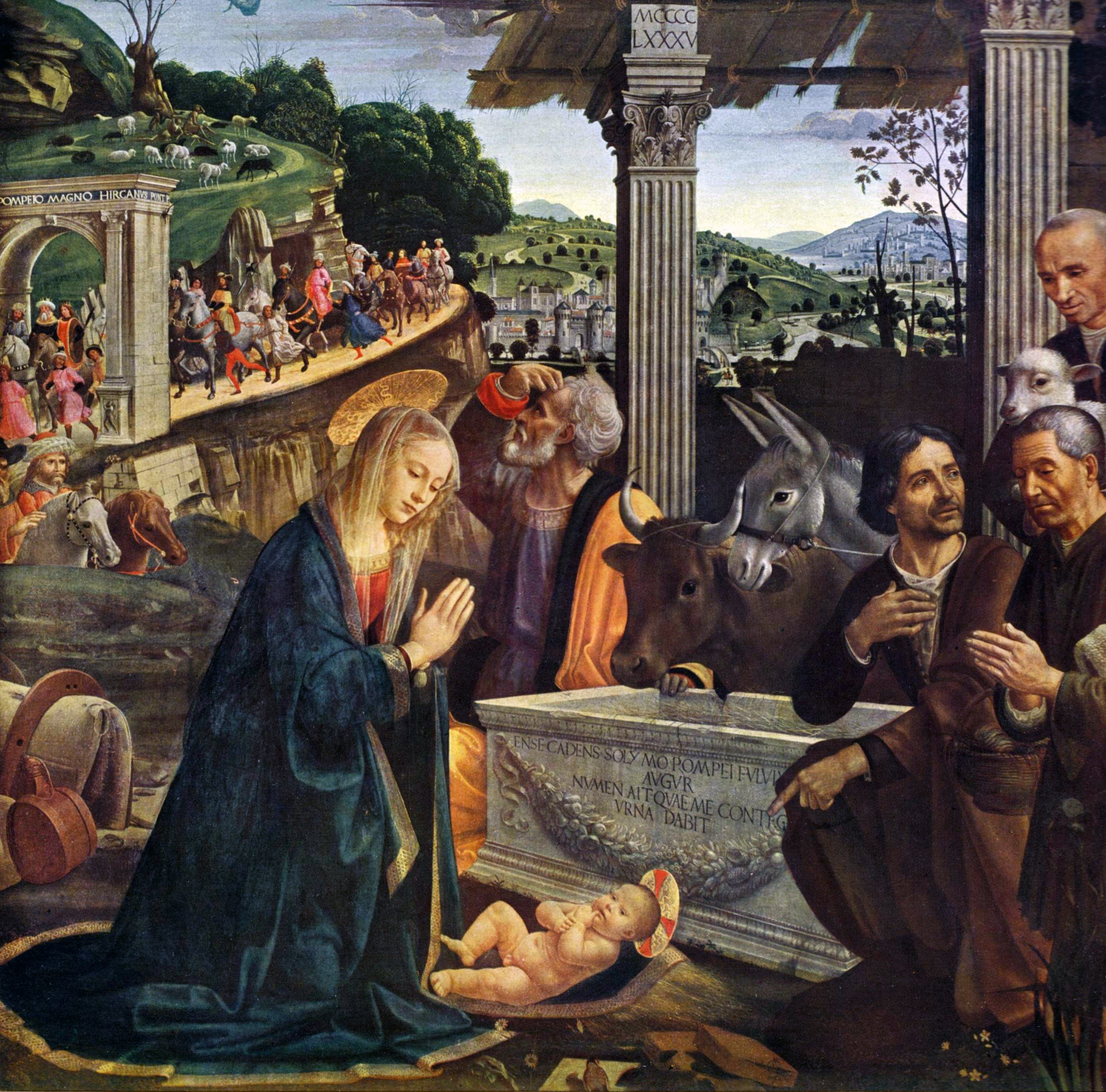
Adoration of the Shepherds
The Adoration of the Shepherds is an episode in the story of Jesus's nativity in which shepherds are near witnesses to his birth in Bethlehem, arriving soon after he is actually born. It is recounted, or at least implied, in the Gospel of Luke and follows on from the annunciation to the shepherds, in which the shepherds are summoned by an angel to the scene of the birth. Like the episode preceding it, the adoration is a common subject in art, where it is often combined with the Adoration of the Magi. In such cases it is typically just referred to by the latter title.
For other uses, see Adoration of the Shepherds (disambiguation).Biblical commentary[edit]
Roger Baxter reflects on verse 15 ("Let us go to Bethlehem..."), writing, "Observe the prompt obedience of the shepherds, and learn thence to obey with promptitude the divine inspirations." For they came with haste. No one can see Christ slothfully," says St. Ambrose.[4]
The Venerable Bede makes a similar comment: "The shepherds hasten, for the presence of Christ must not be sought with sluggishness; and many perchance that seek Christ do not merit to find Him, because they seek Him slothfully."[5]
The scene is very commonly combined with the Adoration of the Magi, which makes for a balanced composition, as the two groups often occupy opposite sides of the image space around the central figures, and represent the theological interpretation of the episode where the two groups – Jewish and gentile – represented the peoples of the world between them. This combination is first found in the 6th-century Monza ampullae made in Byzantine Palaestina Prima.
The depiction of the adoration of the shepherds as a theme distinct from that of the Magi began to appear in the western Christian world in around the 15th century. The shepherds are sometimes shown presenting simpler gifts to Jesus than those of the Magi, such as lambs.[6] In Renaissance art, drawing on classical stories of Orpheus, the shepherds are sometimes depicted with musical instruments.[7] Alternatively, it has been argued that this motif derives from a custom of playing the pipes before images of the Virgin and Child at Christmas in parts of Italy.[8] A charming but atypical miniature in the La Flora Hours in Naples shows the shepherds playing to the Christ Child, as a delighted Virgin Mary stands to one side. It became a common theme in altarpieces as well as other art forms.[6]
Many artists have depicted the subject. Famous examples include:



